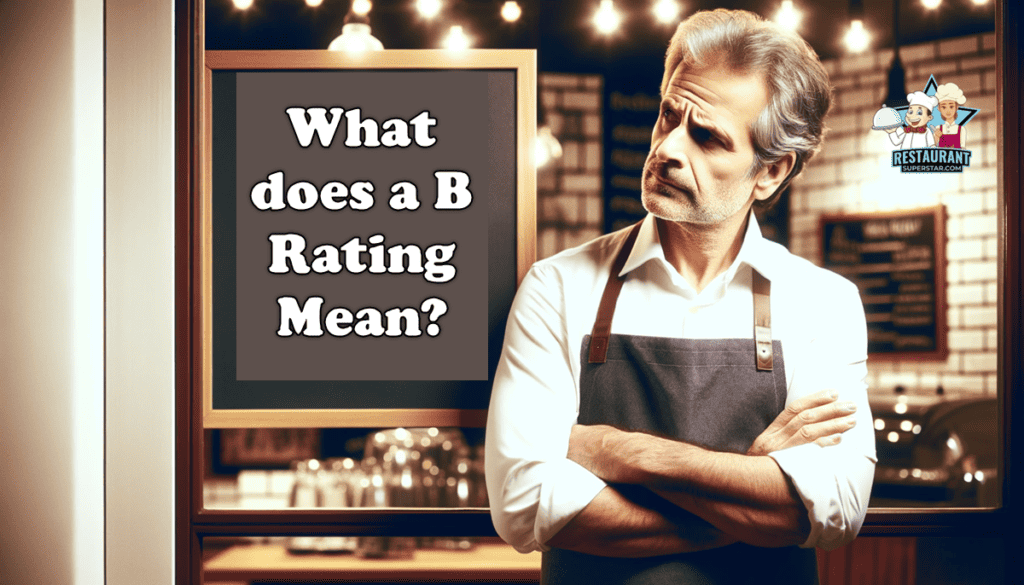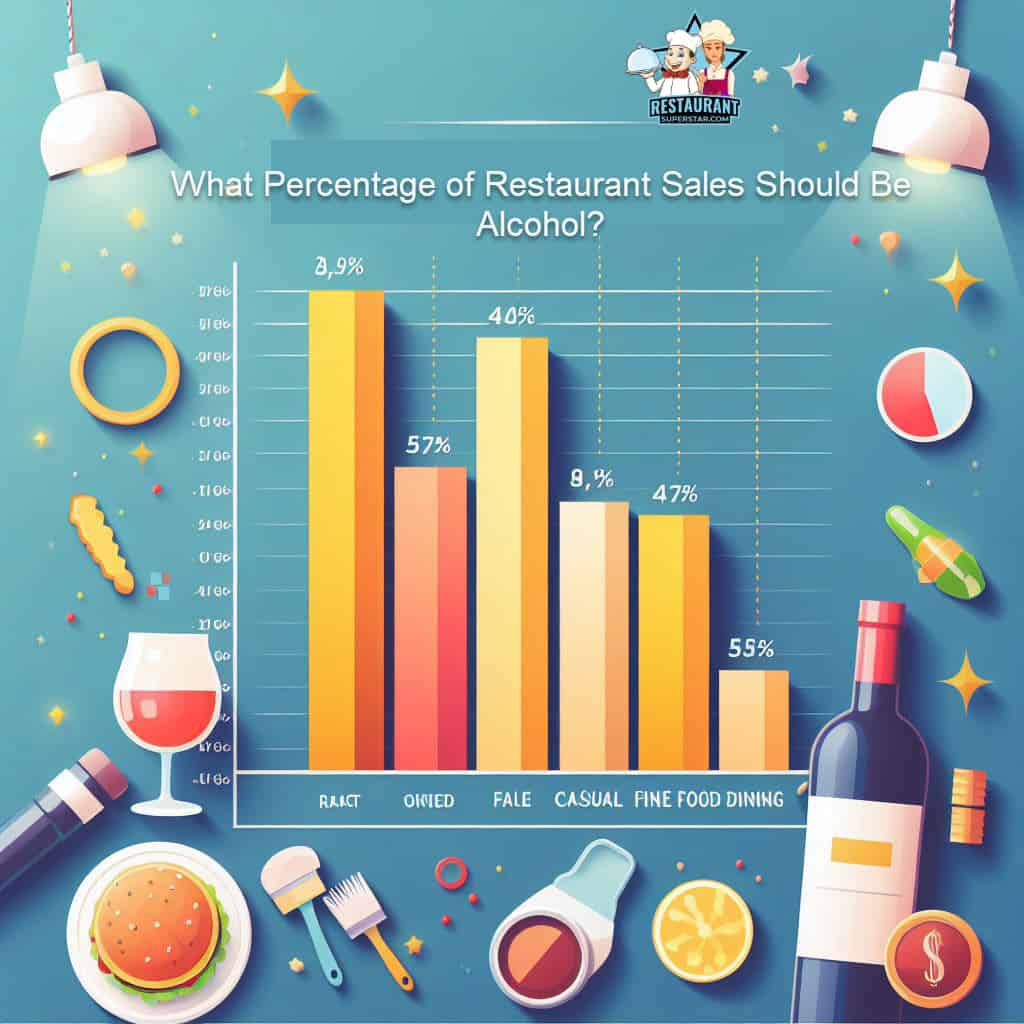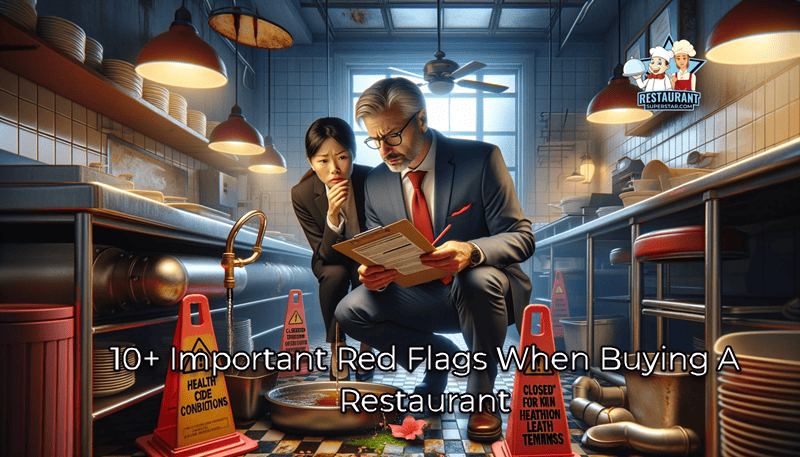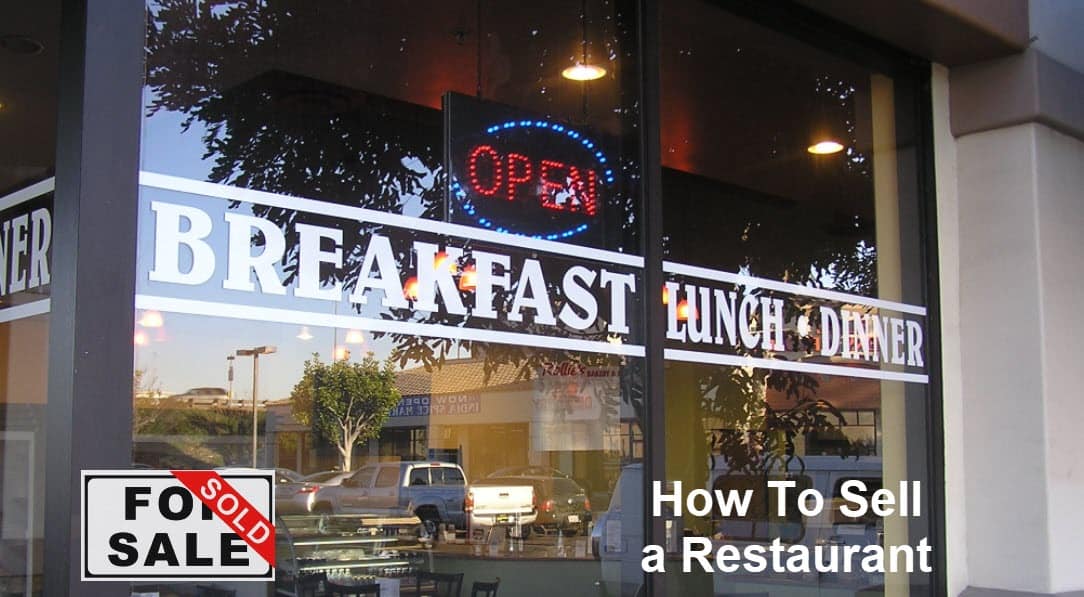Is a B Rating for a Restaurant Bad?
You are in the right place if you wonder, “Is a B rating for a restaurant bad?” This article will answer this question and delve into the finer details of what a B rating truly signifies.
If you’re a new restaurant owner, a young chef, or simply someone curious about the inner workings of restaurant health codes, prepare to gain insights that could change your dining perspective forever.
Here, we unravel the mystery behind the B rating and trust us, the story gets a lot more interesting.
Is a B Rating for a Restaurant Bad?
Is a B Rating for a Restaurant Bad? The short answer is not necessarily. A B rating indicates minor violations in health code regulations but nothing that poses a severe public health risk.
However, wait to click away!
In this article, we’ll explore these minor violations, how they differ from more serious ones, and what a restaurant does to improve its rating.
This information is gold for new restaurant owners and young chefs – understanding it can be the difference between a good and an exceptional establishment.
And for the diners, it’s your window into making informed choices about where to eat.
Now, about those B ratings. Many folks think a B rating is a red flag, signaling that you should run away from the restaurant as fast as possible.
But hold your horses! It could be more straightforward.
While an A rating is like getting a gold star, a B rating doesn’t mean the restaurant is terrible. It’s more like a gentle nudge saying, “Hey, you’re doing good, but there’s room for improvement.”
So, what does a B rating mean?

- Minor Violations: It usually points to small things that need fixing – maybe a fridge not being cold enough or a staff member forgetting to wear gloves. It’s not the end of the world stuff.
- Still Safe: Importantly, a B rating means the restaurant is safe. We’re not discussing significant health risks here.
- A Chance to Shine: A B rating is an opportunity for new restaurant owners and young chefs. It’s a chance to learn, improve, and aim for that A rating next time!
A B rating isn’t a stop sign – it’s more of a yield sign. It tells customers, “This place is good, but there’s potential for it to be even better.”
In the rest of this article, we will dig deeper into what these ratings mean.
We’ll also explore how restaurants can bounce back from a B and discuss what you should remember as a diner or someone in the restaurant industry.
Let’s get started! Stick around – it’s going to be an enlightening journey.
What Does a B Rating Mean?
Okay, let’s get into the meat of the matter. What are we saying when discussing a B rating in the restaurant world?
Think of it like a traffic light system, but for how well a restaurant is keeping up with health codes.
B Rating: The Yellow Light
- Minor Issues: A B rating is like a yellow light in traffic – it’s a signal to be cautious but not to stop. This rating usually means the restaurant has minor slip-ups, like a fridge not being cold enough or a chef forgetting to put on a hairnet. It’s not perfect, but it’s not disastrous, either.
- Still Safe: Most importantly, a B rating means the place is safe to eat. The health department has checked it out, and while they’ve found a few things that need fixing, they’re not significant health hazards.
Contrast with A and C Ratings
- A Rating: The Green Light: An A rating is your green light – all systems go. This means the restaurant is top-notch in maintaining health codes. Everything’s clean, everyone’s following the rules, and it’s as safe as houses.
- C Rating: The Red Light: On the other end, a C rating is the red light. It’s a severe warning that the restaurant has significant issues that need addressing. If you’re a diner, think twice. If you’re a restaurant owner or chef, a C rating means it’s time to buckle down and clean up your act literally.
Why the Rating Matters
- Customer Confidence: These ratings are like a quick reference guide to a restaurant’s hygiene standards for diners.
- Improvement Opportunity: For the chefs and owners, think of a B as constructive feedback. It’s a chance to step up your game and shine brighter.
To sum up, a B rating isn’t bad but is a sign of room for improvement.
It’s like a coach telling an athlete, “You’re doing well, but you can do even better.” So, understanding these ratings is vital, whether you’re deciding where to eat or looking to make your restaurant the best it can be.
Watch as we investigate what a B rating means and how restaurants can work towards that coveted A rating.
Critical Aspects of a B Rating
Now that we understand what a B rating means in the grand scheme of things let’s zoom in on the details.
A B rating is like getting a B in school – it’s pretty good, but there’s room to ace it. There are two main areas to focus on: cleanliness and those pesky minor violations.
General Cleanliness and Sanitation
- Kitchen Cleanliness: The heart of a restaurant is its kitchen. A B rating often means the kitchen is clean, but a spot or two has been missed. We’re talking about things like a greasy corner or a dusty shelf – not glaringly dirty, but it could be better.
- Food Preparation Areas: This also extends to where the food is prepped. Maybe the cutting boards should have been sanitized more frequently, or the utensils weren’t stored correctly.
- Pest and Vermin Control: Ah, the uninvited guests! A B rating might suggest minor issues with pest control. Perhaps there was a stray fruit fly or two, but nothing like an infestation. It’s more of a heads-up to keep a closer eye on these uninvited diners.
Minor Health Code Violations
- Examples of Violations: What counts as a minor violation? Consider a chef forgetting to wash their hands after handling raw meat or a fridge a few degrees warmer than the standard.
- Contrast with Major Violations: These minor slips differ from major ones, such as food stored at unsafe temperatures for long periods or evidence of a significant pest problem. Major issues are immediate red flags, while minor ones are more like yellow flags – caution, but not a complete stop.
Understanding these aspects is crucial, especially for budding chefs and new restaurant owners.
It’s about knowing what to watch out for and striving to improve. For our foodie readers, this insight gives you a peek behind the kitchen doors, helping you make informed choices about where to dine.
In the next section, we’ll explore what it takes for a restaurant to improve from a B to an A. Spoiler alert: it’s all about attention to detail and a commitment to excellence!
Corrective Measures and Reinspection
Rolling up our sleeves, let’s dive into what happens after a restaurant snags a B rating. It’s not just about taking the feedback and nodding; real work must be done.
And for those running a kitchen or dreaming of opening your place, pay close attention – this is where you turn a B into an A.
Steps to Address Violations
- Identify and Understand the Violations: First, know what went wrong. Was it a storage issue, a hygiene slip-up, or something else? Understanding the violation is critical to fixing it.
- Implement Corrective Actions: Next, it’s time for action. This could mean retraining staff on proper hygiene, fixing that slightly warm fridge, or stepping up pest control measures. It’s all about addressing the specific issues pointed out during the inspection.
- Document the Changes: Be sure to note the steps you’ve taken to rectify the situation. It’s not merely for appearances but rather a method to monitor your progress and ensure you’re on the correct trajectory, you know?
The Reinspection Process
- Scheduling a Follow-Up: After you’ve made the necessary changes, a health inspector will return for a follow-up visit. This is your chance to shine and show that you’ve taken their feedback seriously.
- The Importance of Reinspection: This isn’t just a formality. Reinspections are crucial for maintaining public trust and ensuring the dining experience is enjoyable and safe. It’s your opportunity to prove that your establishment prioritizes customer health and safety.
- For aspiring chefs and restaurateurs consider this process as a valuable learning curve. It’s about continuously improving and upholding standards that make diners feel confident and cared for. And for our food-loving readers, this is why you shouldn’t write off a place just because of a B rating. It’s a sign of a restaurant working towards being better.
Our next segment will examine how public perception and reality sometimes differ regarding these ratings and what that means for you. Stay tuned – there’s more to unpack.
Public Perception vs. Reality
Let’s discuss the gap between what people think a B rating means and what it means. Understanding this difference is critical, especially if you love dining out or are in the business.
Public Perception of B Ratings
- The Myth of ‘B = Bad’: There’s a common misconception that a B rating is a glaring warning sign. Many think it means “below average” or “borderline bad.” It’s like seeing a B on a report card and thinking the student is slacking off.
- Influence on Dining Decisions: This perception can heavily influence where people eat. Some diners might skip a B-rated restaurant, thinking it needs to be better with their standards.
The Reality Behind a B Rating
- Not a Red Flag, but a Yellow One: A B rating isn’t a red flag signaling danger. It’s more of a yellow flag – a sign of areas that need a bit of improvement.
- Focus on Minor Issues: These ratings often stem from minor issues like a slight lapse in food storage or a missed spot during cleaning. They are essential to address, but they don’t necessarily compromise the overall quality or safety of the food.
- Still a Safe Choice: Most importantly, a B-rated restaurant is still a safe and acceptable choice for dining. The establishment has met the essential health standards, with little room for improvement.
This difference in perception and reality is crucial for food enthusiasts and culinary entrepreneurs.
If you’re running a restaurant, it’s about communicating to your customers that you’re committed to addressing these minor issues and constantly striving for excellence.
And for diners, it’s about not missing out on potentially great food experiences just because of a B rating.
Our next section will offer tips on evaluating a restaurant beyond its health rating. There’s much more to consider, and we’ll guide you through it. Keep reading.
Choosing a Restaurant: Beyond the Ratings
Deciding where to dine is more than just looking at health code ratings. There’s a whole world of factors that can guide your choice.
Whether you’re a foodie looking for your next favorite spot or a chef sizing up the competition, here’s how to look beyond the letter grade.
Personal Experience Trumps All
- Trust Your Senses: When you walk into a restaurant, trust what your senses tell you. Is the place buzzing with satisfied customers? Does it smell inviting? These cues can be as speaking as any health rating.
- Give It a Try: Sometimes, the best way to judge a restaurant is to dine there. A personal experience can tell you more about the quality of food and service than any rating.
The Power of Reviews
- Check Online Reviews: Online reviews are like a goldmine of information, you know? They can give you all the deets you need! Look for comments on the food quality, ambiance, and service. But remember, take overly negative or positive reviews with a grain of salt.
- Word of Mouth: Never underestimate the power of a recommendation from friends or family. Personal anecdotes often paint a vivid picture of what to expect.
Look at the Menu
- Menu Variety and Specialties: A menu that offers a variety of dishes or specializes in specific cuisines can signify a restaurant’s expertise and passion for food.
- Seasonal and Fresh Ingredients: Restaurants that update their menus to include seasonal and fresh ingredients often pay more attention to the quality of their food.
Observe the Staff and Service
- Attentiveness and Knowledge: The demeanor and knowledge of the staff can greatly enhance your dining experience. Friendly and well-informed staff usually reflect well on the restaurant’s overall quality.
- Efficiency in Service: How quickly are customers seated and served? Efficient service is often a sign of a well-managed establishment.
Atmosphere and Cleanliness
- Ambiance Matters: The atmosphere of a restaurant can set the tone for your meal. The right ambiance can make a meal more enjoyable, whether cozy, elegant, or quirky.
- Visible Cleanliness: While health ratings focus on the kitchen, visual cleanliness in the dining area can also indicate the restaurant’s overall standards.
Choosing where to eat is about blending the tangible (like health ratings) with the intangible (like ambiance and personal experiences).
Next time you pick a place to eat, remember there’s more to a great restaurant than its health code rating.
Frequently ASKED Questions
What does B rating mean NYC restaurants?
A “B” rating for NYC restaurants indicates that the establishment has some issues that must be addressed. While it is not at an “A” rating, which signifies cleanliness and compliance with health codes without violations, a “B” rating suggests specific problems the restaurant must fix.
What is a B sanitary rating in NYC?
In New York City, a “B” sanitary rating is given to restaurants that score between 14 and 27 points during hygienic inspections. This rating system, implemented in 2010, requires restaurants to publicly display these grades. While an “A” is achieved with a score of 0 to 13, indicating high compliance, a “B” suggests moderate compliance with health standards.
What does a B rating mean?
In general, a “B” rating implies good performance. It is a step below the “A” levels (A+, A, A-) which indicate excellent performance. The “B” category, including B+, B, and B-, suggests that while the entity performs well, there is room for improvement. This contrasts with lower grades, where “C” grades indicate satisfactory, “D” grades less than good, and an “F” shows unsatisfactory performance.
What does B mean at a restaurant?
At a restaurant, a “B” grade, unlike academic grading, is not considered a passing mark. It indicates that the establishment did not meet minimum health standards, known as a “Downgrade.” Restaurants with a “B” must correct their violations and undergo re-inspection to achieve an “A” grade, the only passing grade indicating full compliance with health standards.
What is a B grade restaurant?
A “B” grade for a restaurant suggests the presence of specific issues that require attention. It denotes that the restaurant has not met all health and safety standards, unlike a “GRADE A” restaurant, which is clean, up to code, and free of violations. “B” grade or “grade pending” establishments have critical violations that could potentially lead to foodborne illnesses, necessitating corrective measures.
Conclusion
Alright, let’s wrap this up and put a bow on it! We’ve taken a culinary journey through restaurant health ratings, mainly focusing on what a B rating means. Hey, here’s a quick recap of the key takeaways.
I just wanted to share this with you.
B Rating: Not Bad, But Room for Improvement
- A B rating signals minor issues, not major health risks. It’s a call for the restaurant to step up its game, but not a red flag for diners.
Behind the Ratings: Cleanliness and Minor Violations
- This rating often relates to general cleanliness and minor health code violations. Think of it as a nudge for better practices in the kitchen and dining area.
Corrective Actions and Reinspections Matter
- A B rating starts a process of improvement, including corrective actions and reinspections. It’s a chance for growth and excellence in the restaurant industry.
Perception vs. Reality: A B is Not a C
Public perception often misinterprets a B rating as something negative. Still, it’s a sign that a restaurant is safe but has some areas to improve.
Choosing a Restaurant: Look Beyond the Letter
- Don’t rely solely on health ratings. Consider personal experiences, reviews, menu quality, service, and atmosphere when choosing where to dine.
So, what’s the real significance of a B rating? It’s a middle ground – not perfect, but not a deal-breaker. For restaurant owners and chefs, it’s an opportunity to refine and excel. And for diners, it’s a reminder to look at the bigger picture when choosing where to eat.
Remember, the rating is just one piece of the culinary puzzle, whether it’s an A, B, or C. Happy eating, and here’s to finding your next great meal – rating and all.
Jeff Smith is a Restaurant Consultant with over 20 years of hospitality experience ranging from server to owner and general manager. He focuses on Restaurant POS technology as well as restaurant marketing. Check out our world-famous restaurant resources page for a comprehensive offering of hand-picked resources and tools to help your business. You can also check out some of our other restaurant business articles.




